When Mike and I (Steph) got our dachshund puppy Django, we were over the moon in love with him. Our adorable little puppy was playful, adventurous, mischievous, and the best cuddler in the world. He, like most dachshunds, was also notoriously hard to housebreak.
Django, like all puppies, had regular "accidents" in our home before becoming fully housebroken. While some dogs can learn to go potty outside by the time they are 3-4 months old, other dogs may take longer to train. Django was 7 months old when he finally stopped peeing in our apartment. What helped us teach Django that going potty was an outdoor-only activity? Dog bell training.
Training your puppy or adult dog to ring a potty bell to go outside allows your dog to easily and clearly communicate when he needs to go to the bathroom. Dog bell training is convenient for both you and your dog and helps prevent accidents. But how does dog bell training work? We sat down with Denise Herman, the founder of Brooklyn's Empire of the Dog, to walk us through the training process.
STEP 1: CHOOSE A DOG TRAINING BELL
To get started, you will need to purchase a dog training bell. You can also make your own with sturdy string and jingle bells or a cowbell. Keep in mind that jingle bells have a cross-shaped opening in the bottom, which might pull your dog’s toenails. While cowbells can be heard from anywhere in your house, some dogs are terrified of loud noises. To muffle the cowbell’s sound, wrap a piece of duct tape around its edge or stuff baby socks in it. Make it where your dog can hardly hear the cowbell at first, then gradually work your way to a louder sound.
Here are three trainer-approved dog potty bells that you can find on Amazon.com:
Service Dog Doorbell
VIMOV's Pet Training Bells come as a set of two. They are like the call bells that you see on service desks in hotel lobbies. With a rust-proof finish and non-skid bottom, they feature a flat and wide button that your dog can easily hit with his paw. If you have two floors in your house, you may need to put a bell on each floor. “If I was on the second floor with my dog, I might put a bell at the top of the stairs,” Herman says. “If your dog rings the bell and you cannot hear it from where you are, it is like an existential crisis for him.”
Hanging Dog Doorbell
This is the exact type of dog bell we use for Django. With a heavy-duty nylon belt and seven extra-large jingle bells, Bluetree’s Dog Doorbell easily hangs from any type of handle. It also has adjustable snap buttons, so you can resize it based on the height of your dog. “The pitfall is that you cannot keep it on your front or back door,” she says. “Because every time you open the door to do anything else, your dog is going to hear the bell, and that is going to dilute the meaningfulness of it.”
Wireless Dog Doorbell
The Mighty Paw Smart Bell comes in two pieces — bell and receiver. Plug the receiver into your power outlet. Then stick the bell on your wall or door with 3M adhesive tape. It features four different volumes and 38 different ringtones. “If the bell is too hard for your dog to touch with his nose or he does not like the ringer sound, it would be something that he would avoid,” Herman says. This weatherproof bell only needs 0.75 pounds of pressure to send a wireless signal. It reaches up to 1,000 feet, so you can install it where you spend most of your time and never miss an alert.
STEP 2: TEACH YOUR DOG TO TOUCH THE BELL WITH HIS NOSE
Before you start your first training session, cut chicken, hot dogs, or cheese into raisin-sized pieces. “I keep my treats tiny because if I'm training a dog for 15 minutes, I might use 50 to 60 treats,” Herman says. You can also use these organic, all-natural, and grain-free dog treats.
- Teaching your dog to touch a bell with his nose or paw is called targeting. If you do not have a bell, you can use a soup can. Say “Touch,” and put the can or bell down. You don’t need to smear it with spreadable cheese or dog-safe peanut butter. “If you time it right, your dog will automatically go sniff it,” she says.
- When your dog’s nose touches the bell, say “Yes!” and immediately put a treat on top of the can. If you are using a clicker to train your dog, you can click it instead of saying “Yes!”
- Let your dog go back and smell the object. Say "Yes!" and put a treat on top of the can or bell every time he smells it, so he knows that the moment is buying him food.
- Repeat 15 to 25 times or until your dog readily touches the bell with his nose or paw. Then place the can further away or off to the side each time you say “Touch.” Your dog will have to turn his head or take a few steps to sniff it.
Practice for three to five days, aiming for at least one 15-minute training session per day. Puppies might only be able to train for one minute at a time. While they are capable of learning quickly, they have short attention spans and need frequent breaks.
STEP 3: TEACH YOUR DOG TO RING THE POTTY BELL BY THE DOOR
- Hang your training bell on your doorknob or on a hook by your door. Then get your treats ready and call your dog over.
- Say “Touch,” and hold the bell out towards your dog. If you are using a service bell, click or say “Yes!” and reward your dog every single time he hits the top half of the bell. If he touches the bottom half, reward him 50 percent of the time. “Because you want to create a reinforcement differential where your dog thinks, ‘I would rather touch the top half and get all the treats,’” Herman says. This is a process called pre-shaping.
- Then split the service bell into thirds. Within 10 to 15 repetitions, your dog will figure out what part of the bell is getting “paid” better. “Dogs are very good at figuring out the market rate,” she says.
- Top — Treat every time
- Middle — Randomly treat half of the time
- Bottom — No treat
- Repeat this step until your dog touches the bell five times in a row with his paw or nose.
STEP 4: TEACH YOUR DOG WHEN TO RING THE BELL
Now that your dog is an expert bell-ringer, he needs to learn that ringing the bell only means a quick potty trip. It is not a time to play, hunt, or sniff. “You have to know when your dog is shooting blanks,” Herman says. “If he came in 30 minutes ago and he is ringing the bell again, it is for recreation.”
To train your dog when to ring the bell, ask him to touch it with his nose or paw right before you open the door. Then say “Yes!” and give him a treat. Do this every single time you take your dog outside.
Even if the bell does not make any noise the first time your dog hits it, say, “Yes!”, give him a treat, and take him out right away. As soon as he goes poop or pee, give him another treat. This will help him make the connection between ringing the bell and going potty outside.
BEFORE YOU GO
We would love to hear from you! If you have any dog bell training questions or want to share a potty training experience, please leave a comment below.



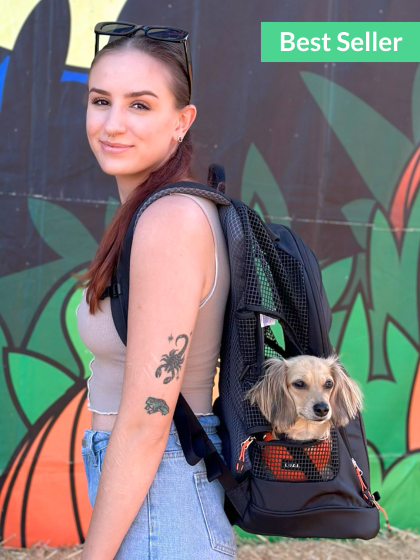



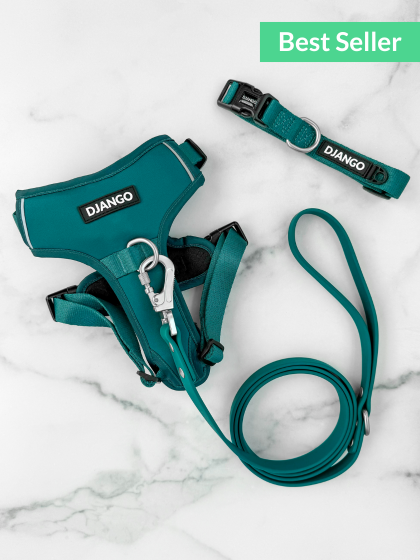
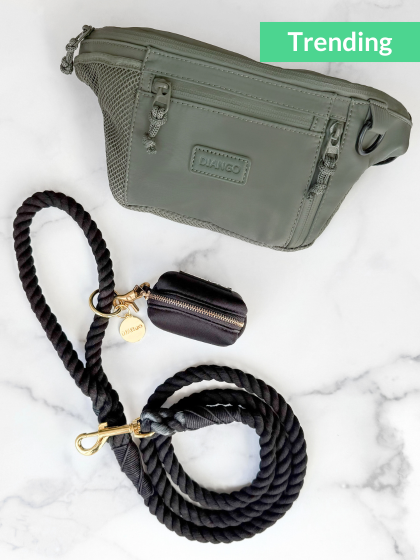
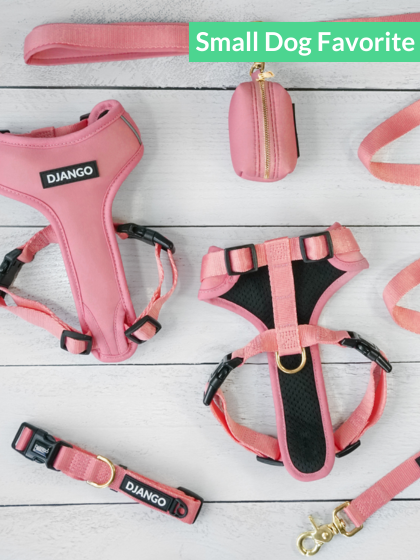
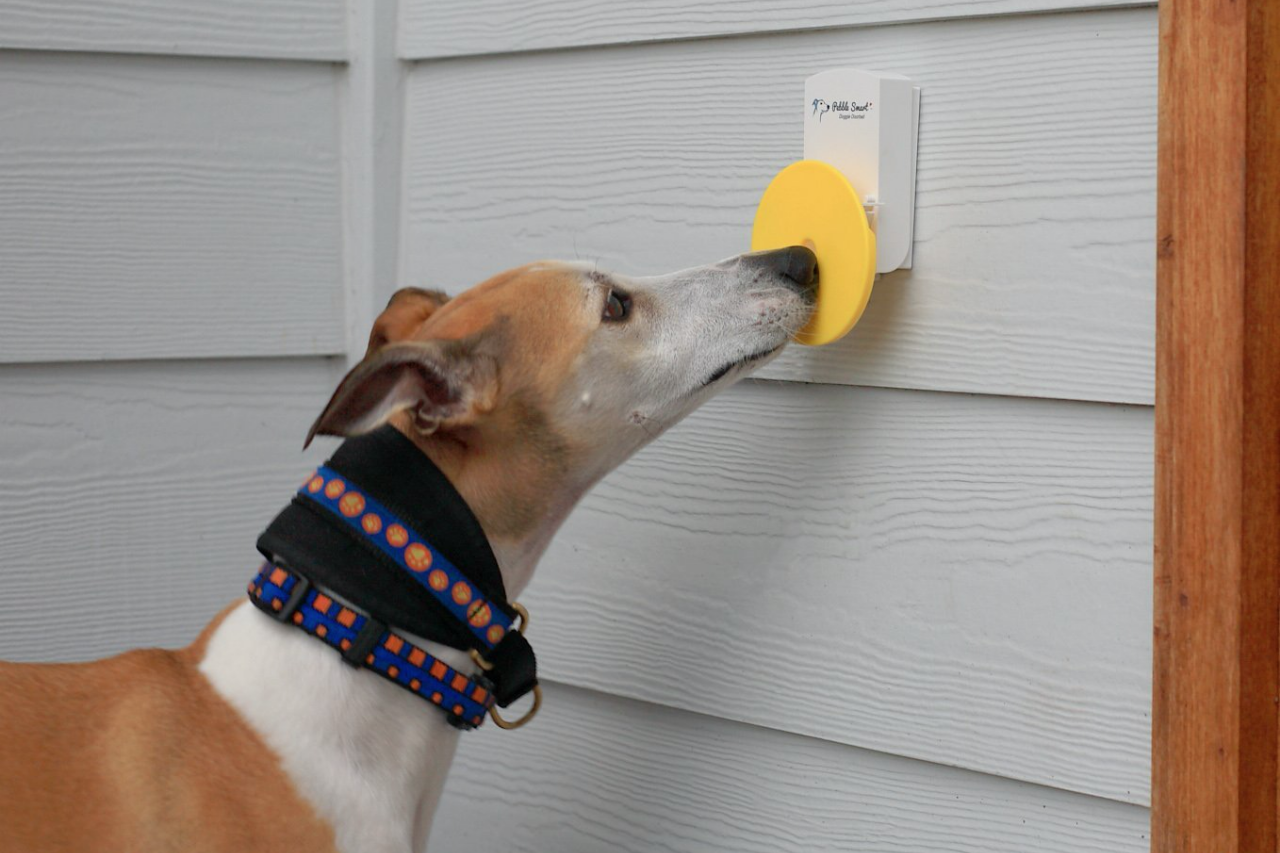
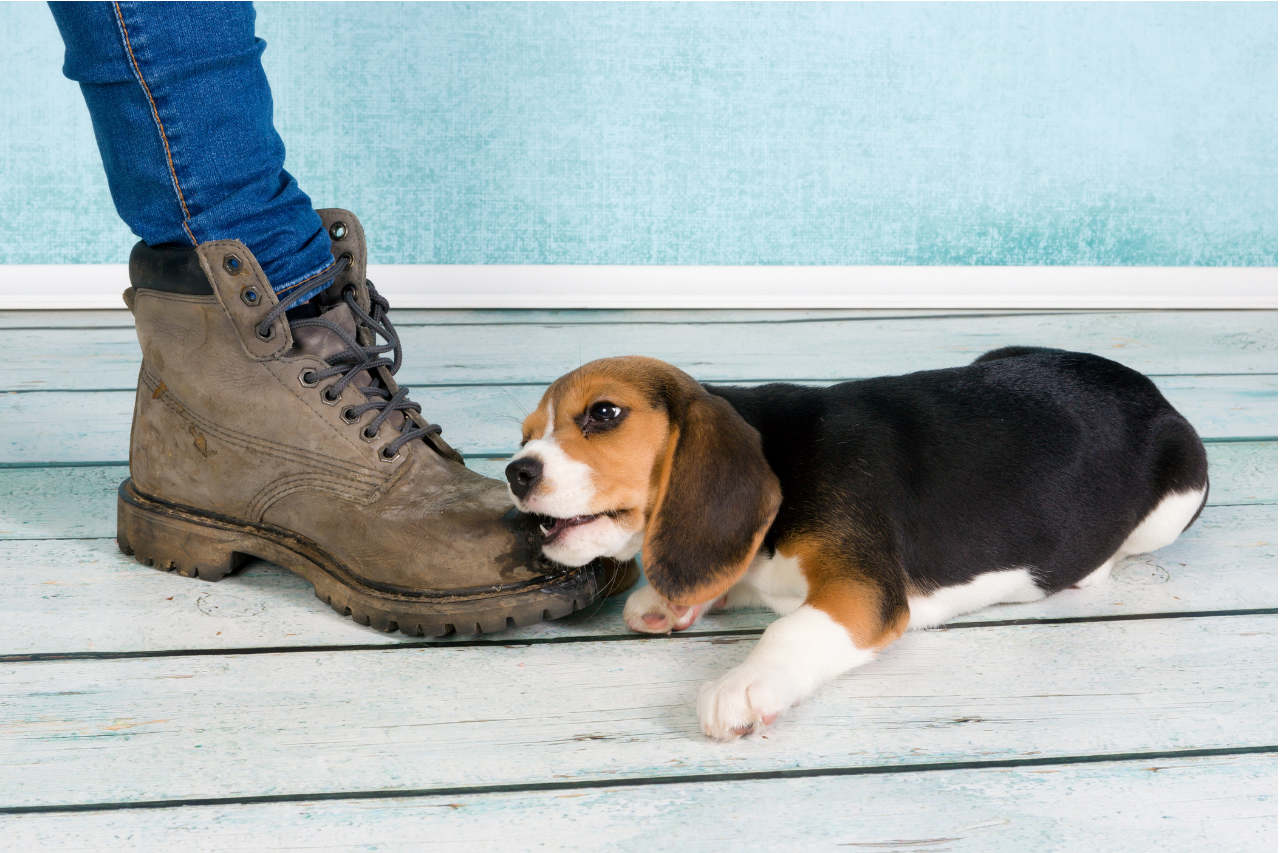
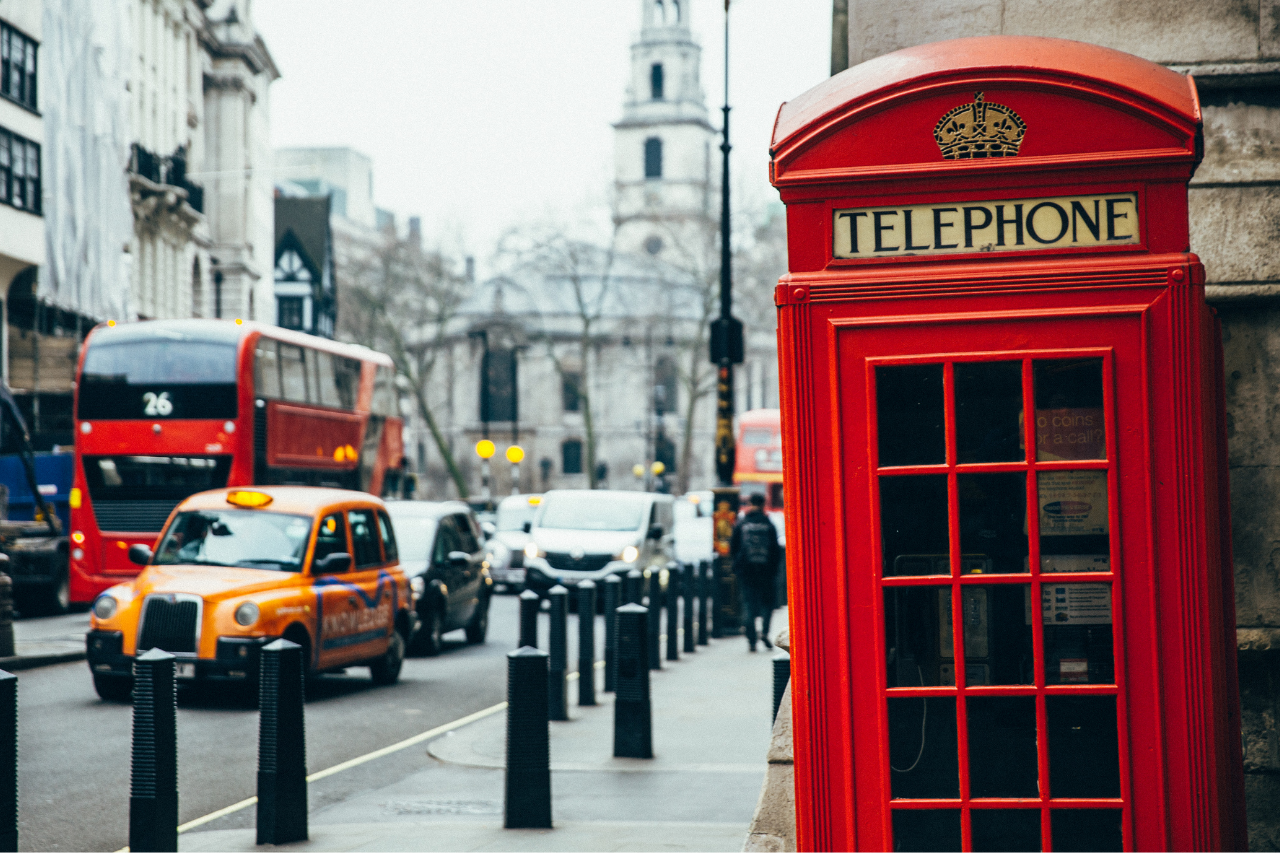
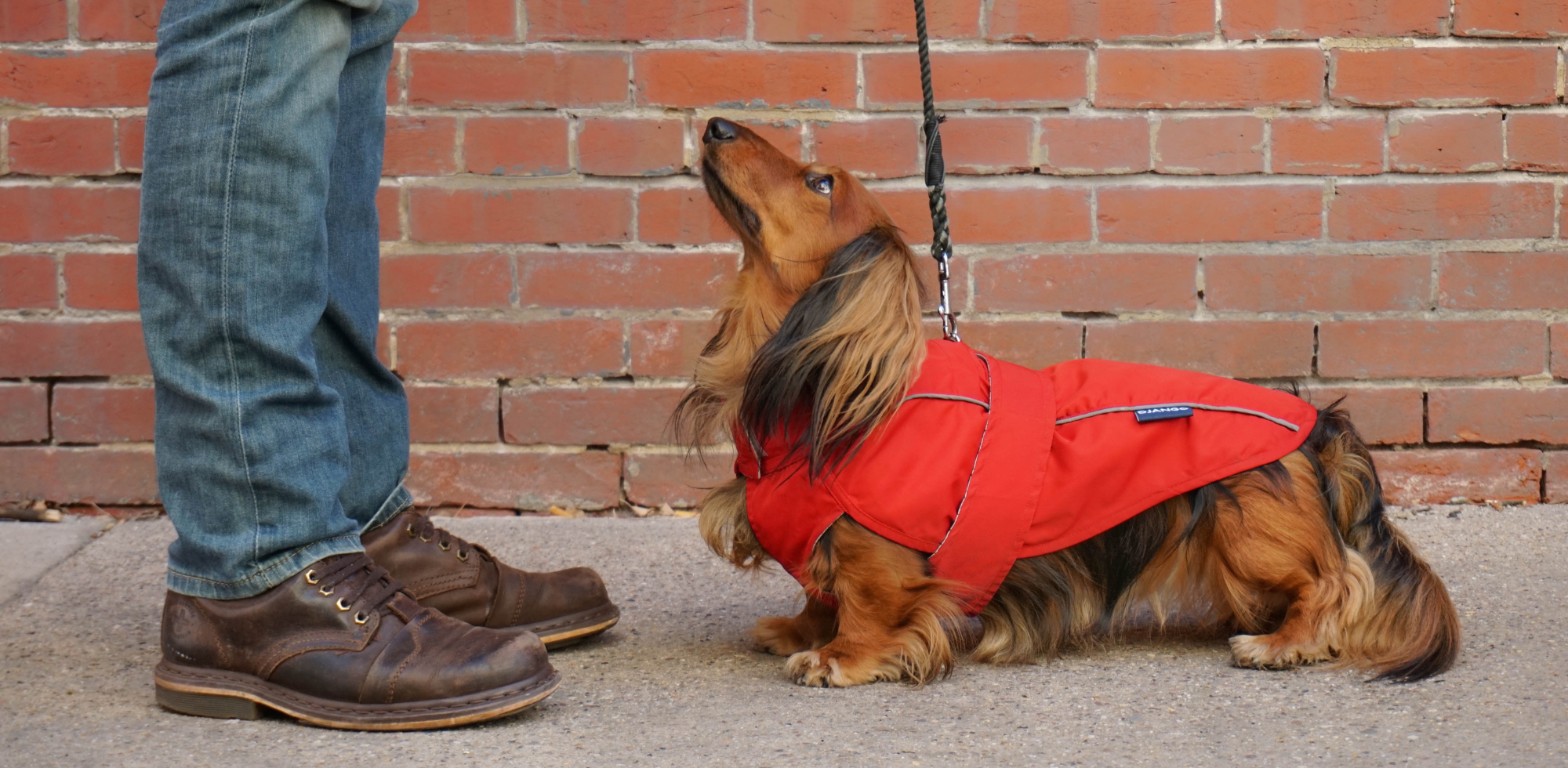
2 comments
DJANGO
@VICTORIA ST. BERDOODLE Great question! If your dog is scared of bells, this is obviously the first hurdle to tackle 😅 We recommend taking at least 1-3 weeks to get your dog acquainted with and used to having a bell around. This means (1) Laying the bell on the floor and letting your dog naturally come over to it to sniff it. If your dog stays clear of the bell on the floor, put a treat next to it to lure him over to it (2) As soon as your dog goes near the bell and/or even touches it out of curiosity, give him tons of praise and a treat so he knows being near/touching the bell is a positive thing. Ultimately, you will need to do this every day for a few days (or even weeks) until your pup is no longer scared of the bell and the sound it makes.
One other option – you may be able to find a potty doorbell that doesn’t resemble a typical bell and even sounds different than a normal one. You may be able to find something less ‘threatening’ to your pup and unique on Etsy or Amazon. Just an idea that may be worth exploring :)
Best of luck!
@VICTORIA ST. BERDOODLE Great question! If your dog is scared of bells, this is obviously the first hurdle to tackle 😅 We recommend taking at least 1-3 weeks to get your dog acquainted with and used to having a bell around. This means (1) Laying the bell on the floor and letting your dog naturally come over to it to sniff it. If your dog stays clear of the bell on the floor, put a treat next to it to lure him over to it (2) As soon as your dog goes near the bell and/or even touches it out of curiosity, give him tons of praise and a treat so he knows being near/touching the bell is a positive thing. Ultimately, you will need to do this every day for a few days (or even weeks) until your pup is no longer scared of the bell and the sound it makes.
One other option – you may be able to find a potty doorbell that doesn’t resemble a typical bell and even sounds different than a normal one. You may be able to find something less ‘threatening’ to your pup and unique on Etsy or Amazon. Just an idea that may be worth exploring :)
Best of luck!
Victoria St. Berdoodle
Help! What if your puppy is deathly afraid of the bells and will not touch them to begin with? 😅
Help! What if your puppy is deathly afraid of the bells and will not touch them to begin with? 😅